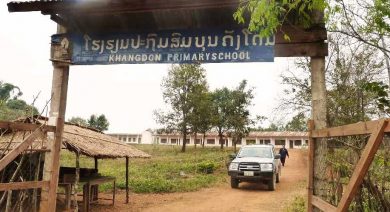
Phonsavan
Phonsavan, Laos – thanks to daily flights and hourly bus departures from Vientiane, Phonsavan is no longer off the beaten path. This gateway to the Plain of Jars, however, remains the path to the beaten and a reminder of the resiliency of humans and their artefacts in the face of the evil that men do.
Today the Northeastern Laos town is calm, quiet and relaxing, the 40,000 residents mingling easily with visitors who stay in hostels and hotels with equally calm and relaxing prices often less than 1000B per night. It is the short trip from those lodgings to the nearby museum and the fields of megalithic stone jars that illustrate the paradox of Phonsavan.
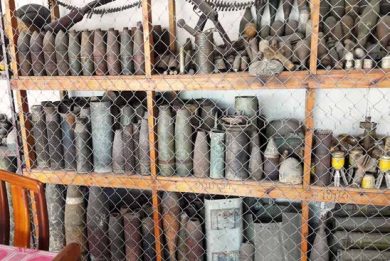
The ancient jars, thousands of years old, are thought to be burial relics, and their survival is an apt metaphor for Phonsavan its mix of ethnicities, Lao, Hmong and Vietnamese.
Together these groups populate as many as 90 jar sites, nine of which have been cleared of unexploded ordinance, UXO for short. The 2500 jars and lids lie among the remains of missiles, mortars, shell casings, bombs and shrapnel that dot the town and war-scarred surroundings.
Some of the fragments of death are sorted and labelled at the museum at Jar Site 1 where visitors learn that in the carpet bombing campaign of the Second Indo-Chinese War from 1964 – 1973 there were bombings every eight minutes, 24 hours a day for nine years. Reports estimate in nearly 600,000 missions more than 270 million bombs were dropped in the region, and as much as 30% of the ordinance did not detonate. Visitors to the museum are unnecessarily cautioned not to handle the lethal exhibits that have been collected from the bombings of the routine days and lunatic nights.
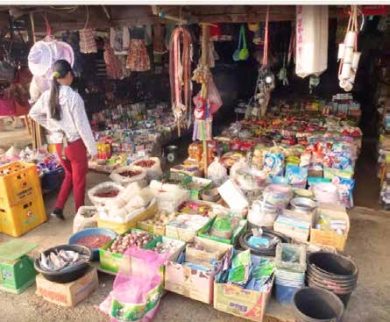
In Phonsavan, 5 kilometres from the museum, there are fewer warnings but even more rusted relics of combat. Hotel lobbies are festooned with yesteryear’s shells and grenades. One of the more popular cafes in the town, Craters, beckons customers to table inside with a display of massive bomb casings outside. Across the street from Craters visitors discover a more formal account of the war.
“Phonsavan’s main street and the narrow alleys leading to the town market feature endless small businesses and opportunities for travelers to interact with the children and grandchildren of the “Forgotten War”.”
The (Mines Advisory Group) MAG UXO Information Centre (https://www.maginternational.org/where-mag-works/ mag-information centres) sells handicrafts and hope as they chronicle stories of the war, its survivors and their descendants. The tales are heroic. The descendants, too.
Phonsavan’s main street and the narrow alleys leading to the town market feature endless small businesses and opportunities for travellers to interact with the children and grandchildren of the “Forgotten War.” These survivor-entrepreneurs offer tours on motos, tuk-tuks and vans, home stays, textiles and handicrafts often sculpted from battle shards.
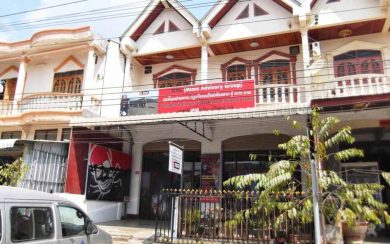
The small eateries of the town provide further example of the descendants’ mettle. Two of the more popular restaurants judging by Trip Advisor ratings, Bamboozle and Cranky-T (https://www.tripadvisor.com/Restaurants-g612364 Phonsavan_ Xiangkhouang_Province.html) offer Western and Lao dishes and have connections with Lone Buffalo, a non profit organisation formed in 2010 to help educational and vocational programmes. http://exofoundation.org/project/ lone-buffalo/
Both restaurants promote Lone Buffalo products such as t-shirts and bags, and no one appreciates the educational need more than the owner of Cranky-T, Ms Tanoy. Operating out of the building in which she was raised, Tanoy, a San Diego University grad has returned to Phonsavan to work 14 hour days serving a rich confection of smiles and gourmet foods.
As one reviewer writes of the restaurant, “The epitome of cafe life – lively conversation, an inviting atmosphere, an attractive food and beverage selection … [with] locals, expats, and tourists passing through. The food was fresh international fare with rare choices in the region, while the coffee and tea are from the region and served Western style to international standards.”

Tanoy offers English lessons, vocational training and encouragement to her employees and speaks proudly of recent workers who left the restaurant to pursue advancement opportunities attendant with the skills they had acquired while working with her. While employee departures can leave Cranky-T shorthanded, the owner gladly continues to help the impoverished country and its developing educational structure.
A frequent visitor to Laos notes a trip to the surrounding area reveals that need most graphically. Paul Carter, retired US Military officer, and now a scholar completing a PhD thesis at Thailand’s Chulalongkorn University first went to Laos in early 2015 for tourism. He estimates he has visited Laos over a dozen times, several of his trips being charitable in nature. He belongs to an organisation which funds primary and secondary school projects in Laos.
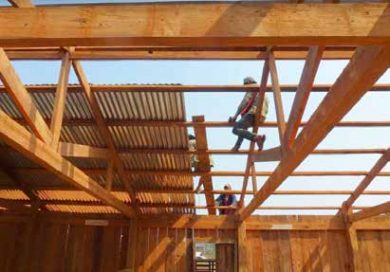
The group’s focus is on the poorer schools, most located in the Plain of Jars area of Laos. The projects are small and involve providing funds to the locals so they can build bathrooms, put new roofs on the schools and lay cement floors to replace the dirt. Carter and other representatives of the charity visit the schools several times per year to check on the progress of the projects and ensure they are being completed to standard. Carter says of his experience with the people “they are kind, generous, and so appreciative of our help.
Their country was nearly destroyed more than a generation ago by indiscriminate US bombing and communist encroachment and atrocities. Hopefully, our charity helps them recover from the war, something they are still trying to achieve.” These words capture the grim charm of the area. Today the World Heritage site of Phonsavan, Xieng Khoung in Lao, features cattle grazing among priceless artefacts, smiling children rising from hardscrabble schools to recover from a dark history they did not know and certainly did not deserve.
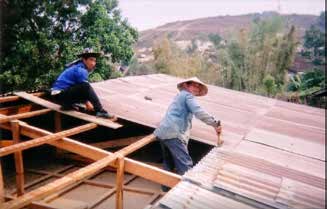
Yet that history provides opportunities for men of conscience. As the Lone Buffalo posts on its web page, “Lone Buffalo create a unique environment in which boys and girls from different ethnic backgrounds can study, develop, build confidence and play sport together. The project provides free English study, structured weekend football coaching and photography and film making programmes for young people.
Students come from relatively poor backgrounds but Lone Buffalo believe that they should be given the same chance as others to benefit from the opportunities that are arising as Laos graduates from the UN’s ‘Least Developed’ status. Most students’ parents are farmers – but they have similar ambitions to other young people for successful careers in business, arts and technology.”
The indefatigable Tanoy is at once a testimony and promoter of the possibilities that have grown from the ordinance and tenacity of Phonsavan and its peoples. From the beaten path, the unvanquished people who refuse to be defeated offer visitors an invigorating opportunity to discover these qualities for themselves.
